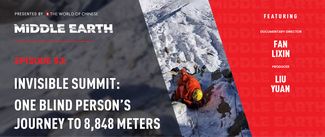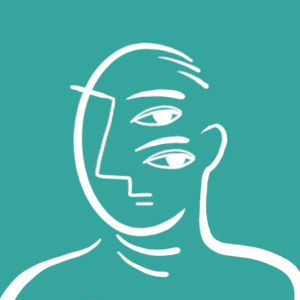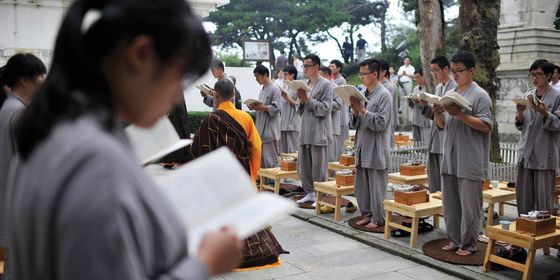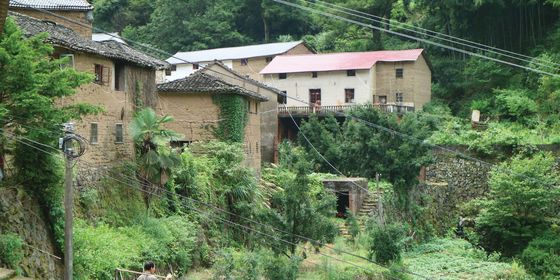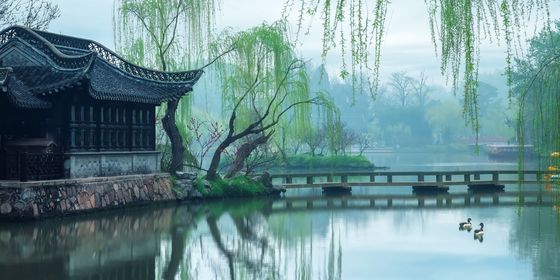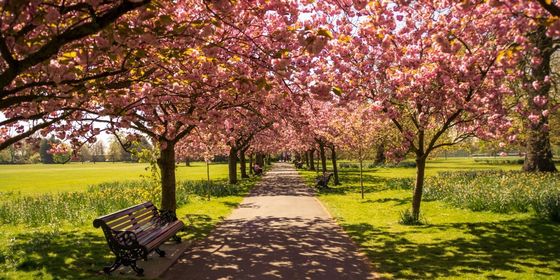As millennials tire of city life, the humble hermit makes a comeback
“I have sat here quietly and let my brush fly/ Suddenly this volume is full,” the ninth-century poet Han Shan (寒山) once wrote, asked to describe what he found interesting about life on “Cold Mountain,” the jagged peak from which he took his name.
For many young people, living in the iron-and-concrete skyscrapers that dominate China’s newly developed cities, the view from the rugged mountaintop can seem far more attractive than the smoggy skies and crowded roads of their daily routine. The urge to “to be free of all this/against all the world, choose simplicity,” as wilderness poet Xie Lingyun (谢灵运) described after his exile from the capital in 422, is a common one.
Going back to nature, to a life of common simplicity, free from the din of materialism—it’s an attractive proposition. In part that’s because, for all its revered roots in tradition, the hermit life is one that blissfully rejects everything Chinese society now holds dear: family, property, career, connectivity.
In the information age, to cut oneself off entirely is an actively transgressive choice—but one that some are more than happy to make. Shen Lixing, a cab driver from Zhengzhou, is among the several dozen who have traded a city apartment for a small cell on Wangwu, a mountain in Henan province that’s been imbued with spiritual symbolism since China’s legendary Yellow Emperor supposedly built the first altars on its summit.
In her previous occupation, Shen told Xinhua, she was “selfish, bad-tempered and greedy,” but life on Wangwu has given her a calming new perspective. Shen has a television and mobile phone, and checks the news daily, but others on Wangwu abjure even those small luxuries, passing their time solely with introspective activities like calligraphy practice, hiking, or meditation at one of the mountain’s Daoist temples.
Daoism is strongly associated with hermits in China because of its emphasis on harmony with nature’s rhythms—as opposed to the state’s preference for grand engineering projects, like the Three Gorges Dam, which seek to suborn nature to the human will. But it’s the rapid urbanization that China has undergone over the last four decades that is, perhaps, chiefly responsible for cultivating the renewed interest of people like Shen in the solitary life.
The pleasures and simplicity of passing weeks in a grotto with only the birds for company can seem particularly abundant compared to dealing with dodgy builders, crooked developers, complex ownership laws and skyrocketing prices, although the attractions of hermit life have never been limited to Chinese culture.
Third-century Egypt had its Desert Fathers and Mothers, Christian ascetics whose example proved so popular that, by the time their leader, Anthony the Great, died, “the desert had become a city,” according to Anthony’s biographer. Their spiritual thinking was collected in the Apophthegmata Patrum (“Sayings of the Fathers”), a collection of dialogues that embedded expectations of wisdom into the ascetic lifestyles that continue to this day. The recluse Richard Rolle, whose The Fire of Love celebrated the intense psychic joys of solitary prayer life, was one of the most widely read Christian mystics in the Middle Ages but, by the era of Roger Crab, a vegan prophet who died in Uxbridge in 1680, a more enlightened outlook was taking grip.
The “Age of Reason” celebrated scientific proof over religious fervor (Crab, who’d been severely wounded in the head while soldiering, may have been the inspiration for Lewis Carroll’s delirious Mad Hatter), and hermits became an ornamental accessory, hired by wealthy Georgians to decorate their newly landscaped estates, a tradition borrowed from Roman emperors like Hadrian. One was even paid a small fortune to live alone in Painshill Park for seven years, wearing nothing but a camelhair cloak, but supposedly only lasted three weeks before visiting a local tavern.
By the late 19th century, the frugal figure of the hermit had been entirely eclipsed by rich eccentrics like the fifth Duke of Portland, who built miles of tunnels beneath Welbeck Abbey for privacy, and was immortalized by Kenneth Graham’s Badger, who believed “there’s no security, or peace or tranquility, except underground.”
The present-day hermit takes several forms. There are the dozens of lookouts that man the remote sentry towers of America’s national parks, scanning the wilderness for plumes of smoke, affectionately known as “freaks on the peaks.” There are a few remaining “official” hermits, such as the occupant of Austria’s 350-year-old Saalfelden hermitage, who volunteer to live peacefully, spiritually and unpaid in church lodgings, without modern amenities. And there are the “Into the Wild” types like Chris McCandless, a young homeless American who died tragically trying to fulfill romantic notions of living rough in Alaska’s wilds, or Christopher Knight, the “North Pond Hermit,” who spent 27 years living makeshift in the Maine forest before being arrested for burglary.
Up the Mountains is a story from our issue, “Down to Earth.” To read the entire issue, become a subscriber and receive the full magazine. Alternatively, you can purchase the digital version from the App Store.




